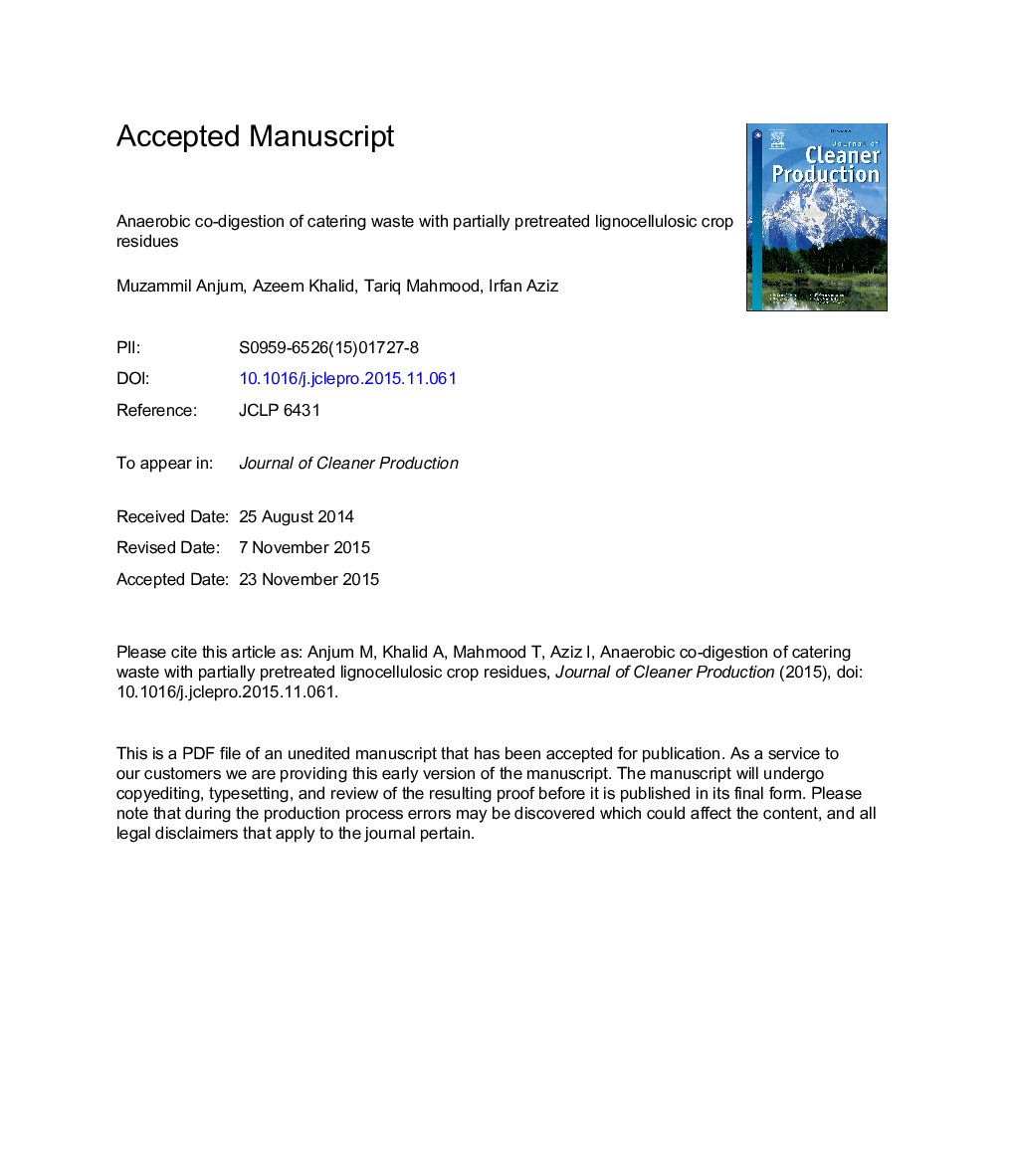| Article ID | Journal | Published Year | Pages | File Type |
|---|---|---|---|---|
| 8102570 | Journal of Cleaner Production | 2016 | 25 Pages |
Abstract
Cellulosic crop residues are produced in large quantities in Pakistan and are considered resistant to biological degradation. Partial pretreatment of these crop residues and optimization of the feed rate could have a synergistic effect on the anaerobic co-digestion of organic waste. The aim of this study was to examine the possibility of enhancing biodegradation and biogas production from the anaerobic co-digestion of catering waste and cellulosic crop residues. Post-harvest crop residues (wheat straw and sugar cane bagasse) that are rich in lignocellulose were partially degraded using a combined microwave (800 J/g/min) and steam (121 °C, 40 min) pretreament. These pretreated wastes were co-digested with catering waste at different feeding rates (20-50% based on total solid, w/w) in batch conditions. High organic-matter removal efficiency was obtained from the feed composition of 20% pretreated wheat crop residues. Similarly, high levels of soluble chemical oxygen demand were observed (up to 85% conversion of insoluble chemical-oxygen demand) in the reactor containing the catering waste and pretreated crop residues. The accumulative biogas produced in both treatments was more than double the biogas observed in catering waste alone. The increased biogas production was due to the presence of more biodegradable carbon in the form of soluble chemical-oxygen demand. The results suggest that the use of a low-cost method (microwave and steam) for the partial pretreatment of lignocellulosic crop residues could increase rate of co-digestion and biogas production. This study provides a novel take on anaerobic co-digestion for the degradation of recalcitrant lignocellulosic material, and the development of an energy-efficient strategy for waste management.
Keywords
Related Topics
Physical Sciences and Engineering
Energy
Renewable Energy, Sustainability and the Environment
Authors
Muzammil Anjum, Azeem Khalid, Tariq Mahmood, Irfan Aziz,
